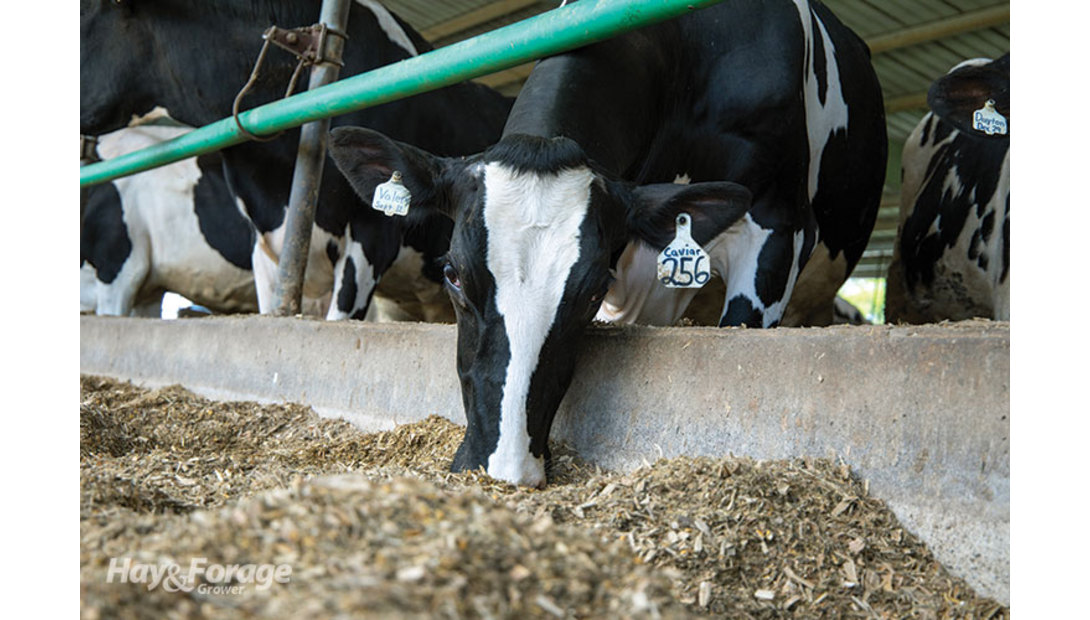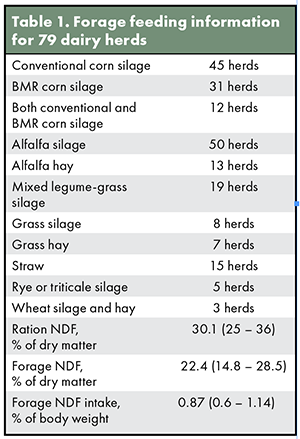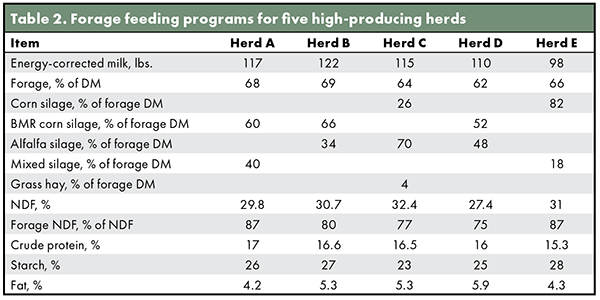The author is a professor emeritus in dairy nutrition with Cornell University.

Forages are the foundation for nutritionally sound, profitable, and rumen-healthy rations. When Randy Shaver with the University of Wisconsin-Madison surveyed high-producing Wisconsin herds, he calculated that forages provided 75% of the total ration neutral detergent fiber (NDF) and 85% of the physically effective NDF in these herds. Forages also provided 45% of the crude protein, 40% of starch, 55% of nonfiber carbohydrates, and 50% of the energy in the rations. The importance of forages to stimulate chewing, rumination, and rumen fermentation is well understood.

A survey of six high-producing Wisconsin herds was conducted in 1997. These herds averaged 31,179 pounds of milk with an average of 45% forage in the ration (range was 31% to 56%). Alfalfa silage was 65% of the forage fed while corn silage was 23%. This survey was repeated using five herds in 2010. These herds averaged 34,247 pounds of milk and fed 54% of the ration as forage (range was 50% to 60%). Corn silage was 49% of the forage fed while alfalfa silage was 47%. The boost in corn silage fed fits with changes in cropping practices during this period.
In 2019, feeding programs of 79 high-producing herds or groups were assembled. The herd nutritionists provided the ration information. Herds were from the Northeast and Midwest areas of the U.S., as well as three herds from Israel. The average energy-corrected milk was 110 pounds per cow per day. Forage was 54.7% of ration dry matter with a range of 33% to 73%, with the lower forage rations from the herds in Israel. Herds feeding more than 60% forage represented 22% of the total herds. Table 1 contains additional information on the forages fed in these herds while Table 2 shows some of the variation among five of the herds.

There were three herds that fed no corn or alfalfa silages. The rations averaged 16.8% crude protein, 26.7% starch, 4.4% sugar, and 5.2% fat. Neutral detergent fiber digestibility and undigested NDF (uNDF240) are not included since this information was not available in most herds. Corn silage was the primary forage fed in 43 herds. Brown midrib (BMR) corn silage was the primary forage in 21 herds, and six herds still used alfalfa silage as the primary forage.
This article appeared in the February 2023 issue of Hay & Forage Grower on page 30.
Not a subscriber? Click to get the print magazine.

